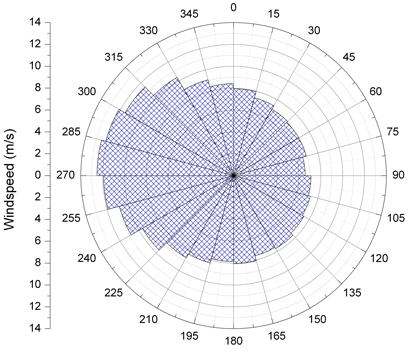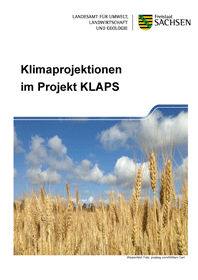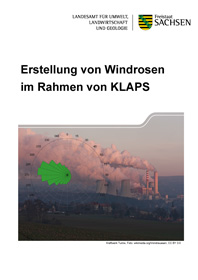Project reports on climate
Climate projections (CEC Potsdam)
The report “Climate projections for the KLAPS project" contains the results of the climate regionalization for the southern part of the Polish-Saxon border region. The modelling method is presented and a classification of the results with other regionalisation is made.
In the project KLAPS, the SRES A1B emission scenario from the A1 family is used on the one hand. As a global forcing the global climate model ECHAM5 MPI-OM model is used. With introduction of the RCP scenario family (Representative Concentration Pathway) in the 5th Assessment Report of the IPCC existing SRES scenarios are added. Therefore in addition the RCP2.6 and RCP8.5 scenarios are used with the current version of the MPI climate model (MPI-ESM). The regionalisation is done with the current version of WETTREG method WR13_v02 of the company Climate & Environment Consulting Potsdam GmbH.
Resimulations of the current climate (20C) were validated with current climate determined from measured climate data. The climate data originate from the German Weather Service, the Polish IMGW and the Czech CHMI. 26 climate stations and 75 precipitation stations were used for the period from 1971-2010. The anomalies of the climate elements temperature, precipitation, relative humidity, air pressure, vapour pressure, sunshine duration, cloud cover and wind speed are small, which means the models are a good to very good representation of the present climate.
The climate projections, calculated using the scenarios A1B and RCP8.5 show e.g. increasing temperature in the range of 3.5 to 4°C in the project area in the time period between 2071-2100. Summer precipitation shows a decrease of 15-25%, winter precipitation an increase of about 20%. The results of the projections were used in the KLAPS project to describe the characteristics of the future climate in the Polish-Saxon border region, as well as perform calculations for the wind roses, modelling of air pollution, critical load and ozone pollution in 21st century.
Wind roses (TU Dresden)
For the projection of transport and deposition of air pollutants in the Polish-Saxon border area, the change in wind conditions (wind direction, wind speed) had to be examined, since no analysis of air pollutants in combination with changing wind conditions previously existed. The "Creation of wind roses in the Polish-Saxon border region as part of the KLAPS project" was realised for the free atmosphere using the dynamic regional climate model CLM. As input for the atmospheric transport model FRAME, which is used in the project for modelling the pollutant dispersion, wind statistics were generated for the pressure levels between 950hPa and 850hPa for various periods between 1971 to 2100. The used data are the u and v components of the wind speed from the 1st run of the CLM_C20 simulation as well as from the 1st run of CLM simulation with the climate scenario A1B in a 3-hour resolution.
The calculated model data of wind directions and wind speeds for the pressure range between 950hPa and 850hPa was validated by comparison with upper air soundings of the weather stations Lindenberg (Germany), Prague (CZ) and Wroclaw (PL) for the years 2000, 2005 and of 2010. The frequencies of occurrence of certain wind directions show the dominance of westerly winds. Compared with the upper air soundings slightly higher wind speeds are modelled.
The calculated wind roses do not show a discernible pattern in the increases and decreases the frequency of wind direction between the decades. Towards the end of the 21st century they seem to increase slightly in the western sectors of 255° to 300°. The mean wind speeds show small increases or decreases between the decades, but a significant change can not be found. Compared to the time period 1971-2000, increases both in frequency and wind speed were found for the periods 2021-2050 and 2071-2100. However, no change signal in a particular direction for either the frequencies or the wind speed could be found.


![Diagram of the band width of temperature signal 2071-2100 vs. 1971-2000 [°C], calculated for 13 climate projections of the projects KLAPS, NEYMO, WEREX and WETTREG Diagram of the band width of temperature signal 2071-2100 vs. 1971-2000 [°C], calculated for 13 climate projections of the projects KLAPS, NEYMO, WEREX and WETTREG](/umwelt/img/klima/413_10_1_klaps_tempsign_de.gif)



![Diagram of the band width of temperature signal 2071-2100 vs. 1971-2000 [°C], calculated for 13 climate projections of the projects KLAPS, NEYMO, WEREX and WETTREG](/umwelt/img/klima/413_10_1_klaps_tempsign_de_rdax_78x67.gif)
![Diagram of the band width of summer precipitation signal 2071-2100 vs. 1971-2000 [°C], calculated for 13 climate projections of the projects KLAPS, NEYMO, WEREX and WETTREG](/umwelt/img/klima/413_10_2_klaps_nss_de_rdax_78x67.gif)
![Diagram of the band width of winter precipitation signal 2071-2100 vs. 1971-2000 [°C], calculated for 13 climate projections of the projects KLAPS, NEYMO, WEREX and WETTREG](/umwelt/img/klima/413_10_3_klaps_nsw_de_rdax_78x67.gif)







